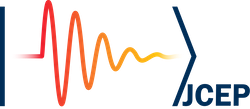Prof Ebrahim Karimi usually teaches the following courses: Electrodynamics for graduate students, Quantum theory of light for graduate students, and Electromagnetism for the third-year undergraduate students.
Office hours for the following courses is 12:00 to 13:00 of Thursday.
Classical Electrodynamics (PHY8132 – Graduate course)
Formulation of the electromagnetism theory is an essential key to our understanding of nature, such as classical optics, microwaves and electric circuits. Both electric and magnetic forces were discovered millennia ago prior to being formulated by Coulomb and Bio-Savart. However, Maxwell showed that electric and magnetic fields are both generated and altered by each other. This revolutionary discovery led to a novel and unique branch of physics, named electrodynamics. In this course, we review several important concepts in the Classical Electrodynamics, among the others, such as Green’s functions, boundary-value problems, multipoles expansions, electrostatic of macroscopic media, magnetostatics, time-varying fields, Maxwell’s equations and gauge transformations, and covariant formulation of classical electromagnetism.
Quantum Theory of Light (PHY5389 – Graduate course)
James Clerk Maxwell ingeniously showed that electric and magnetic fields are both generated and altered by each other. This revolutionary discovery led to a novel and unique branch of physics, named electrodynamics. Electrodynamics successfully explains numerous physical phenomena, but is incapable of describing several empirical effects, such as the photo-electric and Compton effects, and also resulted in theultraviolet catastrophe. Max Planck, in an attempt to describe blackbody radiation, considered a discrete spectrum, i.e. an energy wavepacket, instead of a continuous spectrum for electromagnetic radiation. His theory, i.e. quantisation of energy, successfully described the radiation from a blackbody, and later on, was used by Albert Einstein to describe the photoelectric effect. This was a starting point for the development of one mankind’s best theories: Quantum Mechanics. Numerous ingenious scientists helped and contributed to both quantum formalism and quantum foundations since its inception. Here, in this course, we will focus on the quanta of light, i.e. photons, and its features, the way that they are generated, manipulated and detected. During the course, we will learn how the field quantisation leads to understanding unique effects such as Lamb shift, spontaneous emission, and spontaneous parametric down-conversion. Classical and non-classical light (Coherent, Thermal, Fock, and Squeezed) sources and their photon statistics will be discussed in detail. The action of different optical elements in the quantum regime, and seminal quantum optics experiments (e.g., Hanbury-Brown Twiss, EPR, Bell’s inequality, Hong-Ou-Mandel, induced coherence) will be reviewed during the course.
Electromagnetic Theory (PHY3320- Undergraduate course)
Formulation of the electromagnetism theory is an essential key to our understanding of nature, such as classical optics, microwaves and electric circuits. Both electric and magnetic forces were discovered millennia ago prior to being formulated by Coulomb and Bio-Savart. However, Maxwell showed that electric and magnetic fields are both generated and altered by each other. This revolutionary discovery led to a novel and unique branch of physics, named electrodynamics. Maxwell’s finding was the basis for understanding the theory of electromagnetic radiation, and innovation communications systems.
This course is suitable for the third-year undergraduate students in physics who are familiar with the advanced calculus, special functions and the electrostatics. Electrodynamics (electromagnetism), in the current form, has been developed during the last 200 years, and thus, it is impossible to learn all these developments historically. Thus, the following contents are chosen selectively for your undergraduate programme by the faculty and your school. During this course, the students will learn the following concepts;
- Maxwell’s equations
- Boundary conditions
- Conservation laws (charge, energy, momentum, and angular momentum) in electrodynamics
- Electromagnetic waves
- Reflection, refraction and propagation of waves in different materials
- Scalar and vector potentials as well as electromagnetic gauges
- Electromagnetic radiations
- Relativistic electrodynamics and covariant formulation of classical electromagnetism.
This course excels students’ mathematical skills and helps them to understand electromagnetism deeply.






